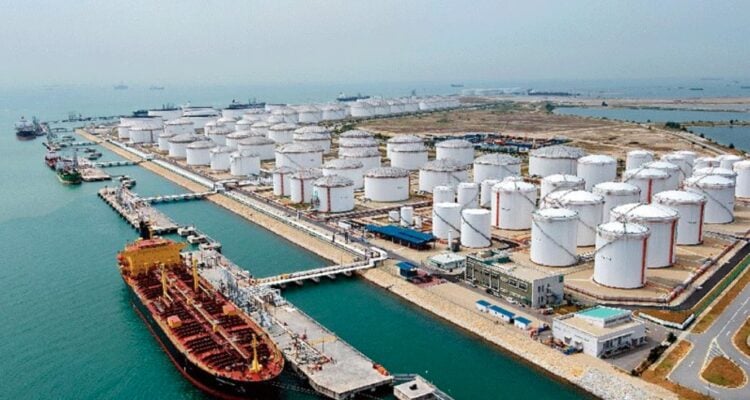Today, Iran produces slightly over 3 million barrels per day, but it hopes nearly to double that to 5.8 million barrels within five years.
By Michael Rubin, Middle East Forum
Iran’s oil fields are the oldest in the Middle East. In 1901, Australian William Knox D’Arcy won a concession for what within a decade would become the Anglo-Persian Oil Company.
As Persia changed its name to Iran in 1935, so did the company, first to the Anglo-Iranian Oil Company and then, as it grew beyond Iran, it rebranded itself British Petroleum.
Production peaked in the 1970s. Post-revolutionary war and political chaos, followed by decades of mismanagement, have left the Iranian fields a shadow of their former self.
The production of some fields now declines by 8 to 12 percent annually. Iran must import refined gasoline, not only to fuel motor vehicles, but also to inject into the fields to extract oil.
Iran’s dependence on imported gasoline is a major reason why its threats to close the Strait of Hormuz are hyperbole; not only can they not militarily, but any closure would hurt Iran disproportionately because China and other customers could easily purchase oil from other markets.
China may soon have to do that anyway. Just under two years ago, the Islamic Republic announced creation of a new development headquarters for nano- and micro-technologies, better known as the Iran Nano-Technology Innovation Council.
While the National Iranian Oil Company treats true statistics about Iranian oil fields a state secret, that memo apparently did not reach the scientists and engineers at center.
Bragging about its production of nano-catalysts that help break down crude and increase yield of more valuable side products, the new organization reported that their nano-catalyst might help Iran stop the death spirals of its fields.
Today, Iran produces slightly over 3 million barrels per day, but it hopes nearly to double that to 5.8 million barrels within five years.
At present, achieving that figure, the nano-tech center says, would require drilling 2,000 new wells. It also reports that each new well takes 200 days to dig and operationalize.
“There is no choice but to increase the extraction from operational wells, which requires the use of advanced technologies such as nanotechnology,” the center announced, adding, “The sanctions imposed on the country and, consequently, the lack of supply of catalysts needed by refineries and petrochemicals from abroad, also caused the prioritization of support” for new catalysts.
Speculation now increases that, in the wake of Iran’s most recent ballistic missile barrage at Israel, the Israel Defense Forces will retaliate. As Iran’s oil industry fuels its economy, targeting the industry appears likely.
Certain chokepoints are obvious. Iran exports 90 percent of its oil through a single point: the Kharg Oil Terminal. With so many fields in decline, however, Iran’s ability to produce or import nano-catalysts may be a second option, as would the Asaluyeh industrial zone where so much of Iran’s oil and petrochemical industries come together.
Across U.S. administrations, there is a bizarre phenomenon: American officials remain blind to or refuse to exploit the Iranian regime’s vulnerabilities and instead snatch defeat from the jaws of victory by flooding the Islamic Revolutionary Guard Corps with cash.
That dynamic has brought the Middle East to the verge of war and the Islamic Republic to the verge of a nuclear weapons breakout.
One of the reasons why the West constantly concedes to Tehran is, just as during the Cold War with the Soviet Union, the Central Intelligence Agency and State Department believe the Islamic Republic to be far stronger industrially and militarily than they are. Achilles’ heels exist.
The only question is who will take the role of the Trojan Prince Paris and fire the fatal arrow.




